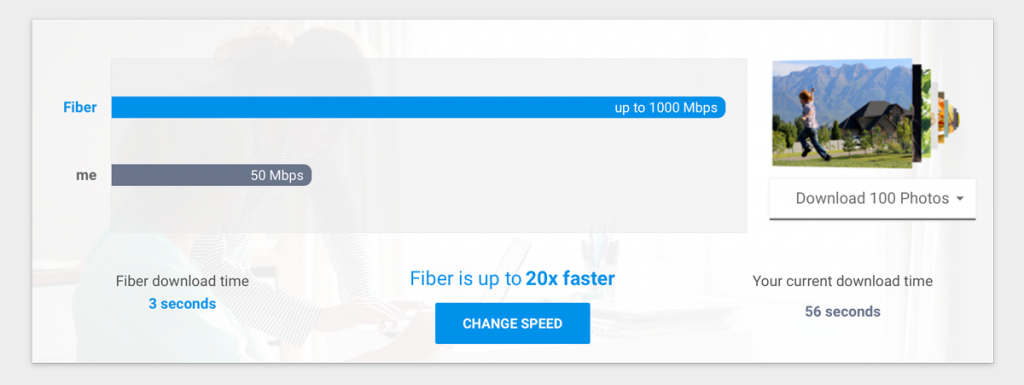Australia’s internet speed is ranked 60th in the world.
Since the announcement of the National Broadband Network (NBN) in 2007, its progress has been stunted by political interference.
When compared to Google Fiber, an internet service launched by the technology giant that has spread across North America in recent years, the NBN is well behind. By comparison, the NBN offers speeds of up to 100 Mbps, up to ten times slower than Fiber’s 1000 Mbps. In more relatable terms, Australians could download a high definition movie in just over a minute, compared to the seven seconds customers of Fiber experience.

Taking inspiration from Google Fiber a number of companies have begun to offer an alternative option to the delayed NBN.
One such company is Lightning Broadband, who connect a fibre link to areas the NBN has currently reached, and broadcasts the quicker internet signal through a microwave link, making use of customer’s TV antennas.
“The overall reaction from the public has been exciting and far above expectations,” Adrian Rich from Lighting Broadband tells upstart.
“We underestimated the extent of internet miseries Australian consumers have. While we still can’t service everyone, we strive to eventually.”
A trend is emerging of smaller internet service providers that are disrupting current internet practices. This can be likened to the rollout of Google Fiber in North America, which Time Magazine described as ”public-shaming” the lacklustre experience American telcos were providing their customers.
As a relatively small internet service provider, Lightning Broadband is not able to offer internet to all areas. This is where smaller companies can somewhat work together, with DGtek in Melbourne’s South-East suburbs connecting fibre internet to homes in the area.
DGtek COO Eli Bekker describes their service as a “cheaper, faster and better” alternative to the NBN.
“Most people contacting us are willing to pay much higher installation costs and are very eager to sign up,” he says.
Following an almost two year enquiry, the Australian Competition and Consumer Commission (ACCC) ruled that fixed line broadband networks could not be run as monopolies, essentially meaning that regardless of who owns and has constructed the broadband infrastructure, it must be usable by competing telecommunications companies.
For smaller companies such as DGtek, this allows them to construct high speed fibre networks in areas they support, and for said fibre to contribute on a wider scale, rather than contained to DGtek’s customer base.
The ruling will allow “retail providers to compete on their relative merits, regardless of the technology used, when the network was constructed, or who operates it”, ACCC Chairman Rod Sims said at the time.
FY16 Results: 1 in 4 homes now nbn-ready as company doubles network footprint https://t.co/YghWaSsst0 pic.twitter.com/CAsfYReXpS
— nbn® Australia (@NBN_Australia) August 16, 2016
While the slow NBN rollout continues, the connection of many homes around Australia will not be entirely through fibre optic cables, as changes to the project mid rollout have left many Australians with a mix of old and new cabling.
Millions of Australians will be without the speeds they were initially promised, and perhaps for many of them, the speeds they need, which is possibly a space for smaller telcos to provide their tailored service.
“We have had requests from all over Australia to sign up,” says Bekker.
DGtek are looking to expand into Geelong, and interstate into Adelaide and Sydney.
There are a wealth of Australians seeking the best possible internet, whether for their businesses, schools, or regular Netflix binges, and it may be the small name companies coming to the rescue.

Nathan Oakley is a third year Bachelor of Journalism student at La Trobe University. You can follow him on Twitter at: @oakley_nathan







